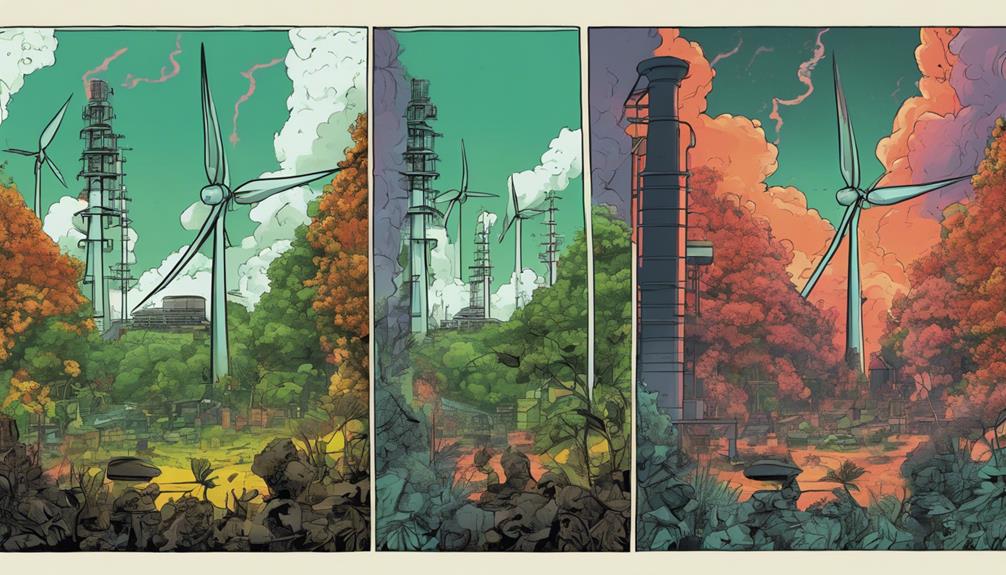As we shift towards renewable energy sources, we can't afford to overlook the pollution challenges associated with biomass energy. If left unchecked, these emissions can negate the environmental benefits of biomass. We need to tackle these issues head-on by developing efficient technologies, promoting sustainable production and sourcing, and educating people about the risks and benefits. By working together, we can harness the potential of biomass energy while minimizing its impact on our health and the environment. There's more to explore on this critical topic, and we're just getting started.
Key Takeaways
- Implementing efficient combustion technologies and pollution control measures reduces biomass emissions and environmental impacts.
- Promoting sustainable production and responsible sourcing of biomass feedstock minimizes adverse environmental consequences.
- Educating people about biomass energy risks and benefits raises awareness and encourages responsible usage.
- Collaborative efforts among governments, industries, and communities facilitate the development of biomass pollution management strategies.
- Innovative technologies like gasification, pyrolysis, and liquefaction offer cleaner and more efficient biomass energy conversion processes.
Environmental Impacts of Biomass

As we investigate the environmental impacts of biomass, it's essential to acknowledge that the combustion of organic materials releases harmful pollutants, contributing significantly to air pollution and adverse environmental consequences.
We're discussing organic compounds that can wreak havoc on our ecosystem. It's vital we address these issues head-on.
Sustainable production and efficient combustion technologies are key to mitigating these negative effects. We must implement biomass pollution control measures to reduce emissions and promote cleaner fuel sources like pellets with lower emission coefficients.
Health Risks and Economic Benefits
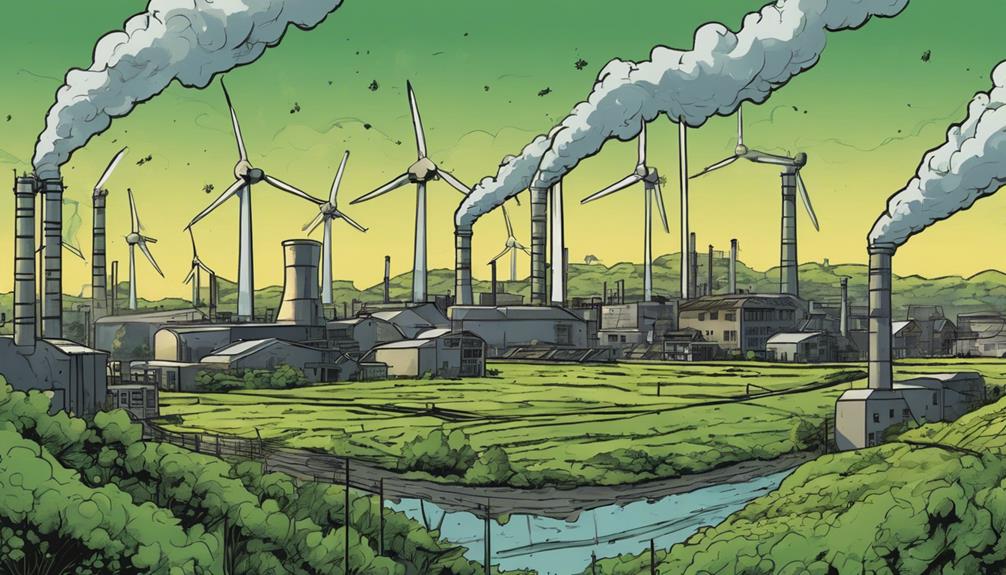
Breathing in biomass emissions, especially indoors, exposes us to a cocktail of toxic particles and gases that can trigger respiratory health issues, from mild irritations to life-threatening diseases. Prolonged exposure to biomass pollution increases our risks of respiratory infections, chronic obstructive pulmonary disease, and even lung cancer.
However, it's not all doom and gloom. Biomass energy also has economic benefits that can't be overlooked. It creates job opportunities in rural communities, stimulates local economies, and promotes growth in biomass feedstock sectors.
Managing Biomass Pollution Challenges
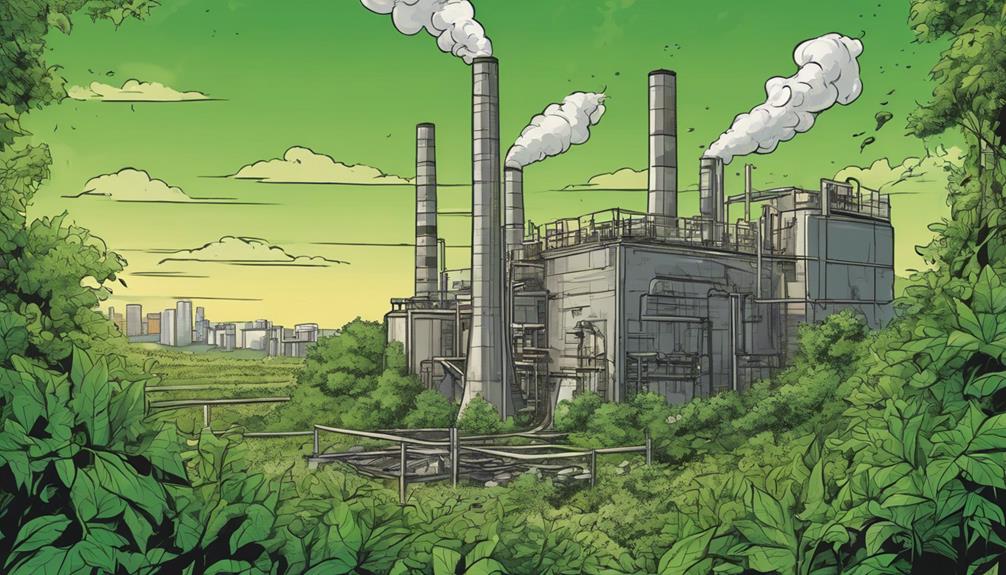
We face significant challenges in managing biomass pollution, from putting in place effective control measures to adopting sustainable practices and promoting collaboration among stakeholders. As we aim to mitigate the environmental impacts of biomass energy, we must tackle these obstacles head-on.
Here are some key challenges we need to overcome:
- Putting in place effective control measures:
We need to develop and deploy efficient technologies to reduce biomass emissions.
- Encouraging sustainable practices:
We must advocate for responsible biomass sourcing and production to minimize environmental damage.
- Facilitating collaboration among stakeholders:
Governments, industries, and communities must work together to develop and implement biomass pollution management strategies.
- Addressing lack of awareness and education:
We need to educate people about the risks and benefits of biomass energy to promote its safe and sustainable use.
Evolution of Biomass Technology
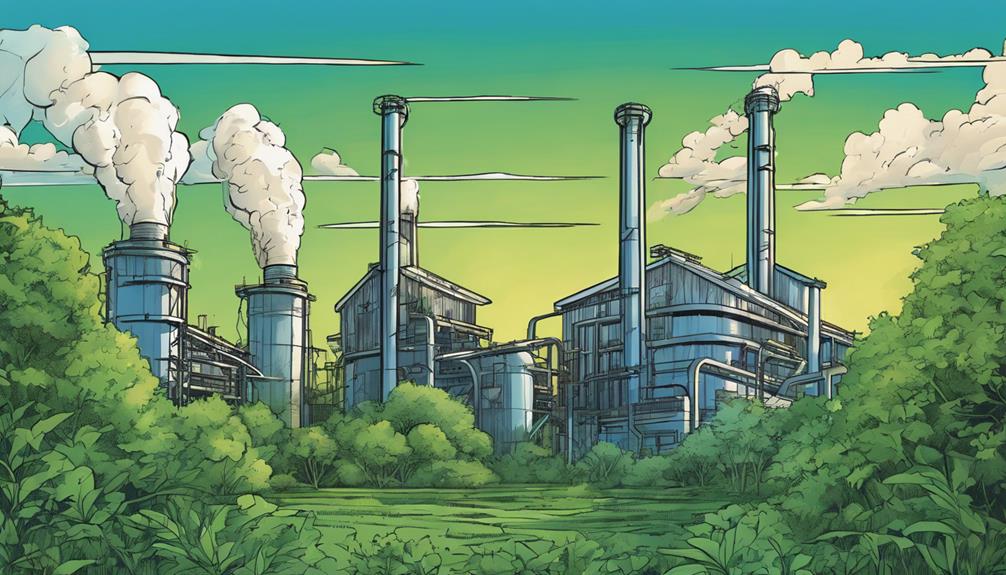
From traditional wood-fired stoves to modern gasification methods, the evolution of biomass technology has transformed the way we harness energy from organic materials.
We've come a long way from relying on primitive combustion techniques that emitted harmful pollutants. Today, innovative conversion processes like pyrolysis and liquefaction enable us to produce cleaner fuels and electricity.
Government policies and incentives have played a significant role in driving this growth, encouraging the development of more efficient and sustainable biomass technologies.
As we continue to explore new ways to harness biomass energy, we're poised to reduce our reliance on fossil fuels and mitigate the environmental impacts of traditional energy sources.
Untapped Biomass Energy Sources

Beyond traditional biomass sources, a vast array of untapped resources – including wood waste, animal and human waste, sewage waste, and algae – holds immense potential for generating renewable energy. As we explore these alternatives, we're uncovering innovative ways to reduce waste and pollution while producing clean energy.
Here are just a few examples:
- Algae: With high energy content and rapid growth rates, algae can be converted into biofuels and biogas for electricity generation, heating, and transportation.
- Sewage waste: Anaerobic digestion can harness the energy potential of sewage waste, reducing waste management costs and greenhouse gas emissions.
- Wood waste: Converting wood waste into biofuels and biogas can reduce forestry waste and provide a sustainable alternative to fossil fuels.
- Animal and human waste: Biogas production from animal and human waste can power rural communities and reduce waste disposal costs.
Efficient Conversion Processes
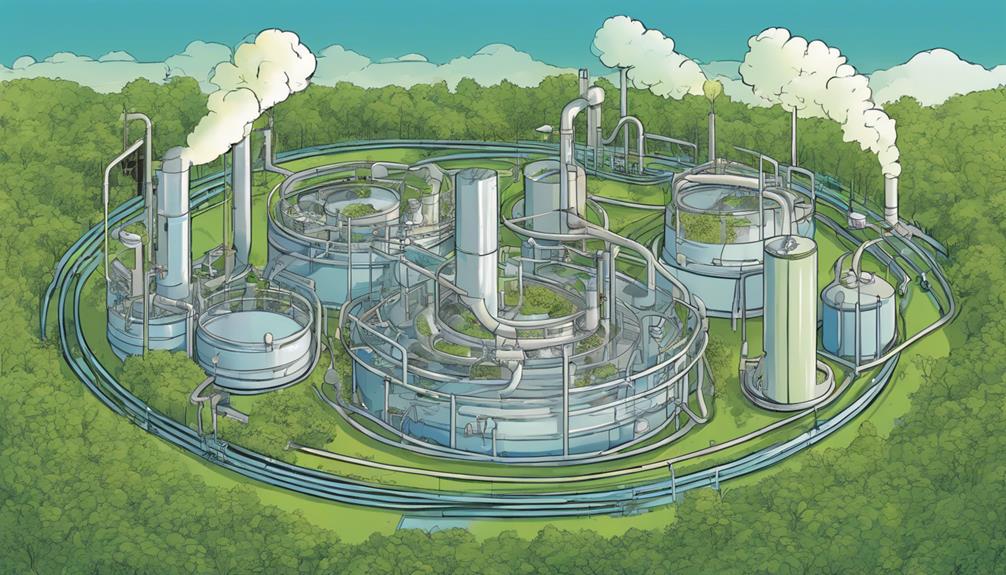
As we tap into these undiscovered biomass resources, efficient conversion processes like combustion, gasification, pyrolysis, and liquefaction become essential for harnessing their energy potential.
We need to guarantee that these processes are optimized to minimize pollution and maximize energy output. Gasification, for instance, is considered the most efficient method for biomass-to-fuel conversion, producing a synthesis gas that can be used to generate electricity, heat, or produce biofuels.
Pyrolysis, on the other hand, can produce bio-oil, which can be refined into transportation fuels. By adopting these efficient conversion processes, we can realize the full potential of biomass energy while mitigating its environmental impacts.
Promoting Sustainable Biomass Practices
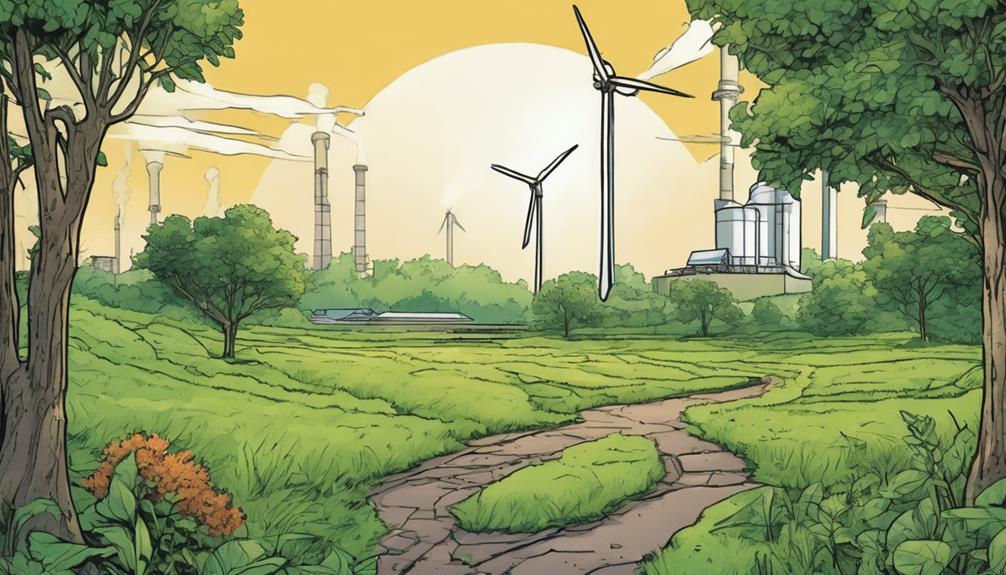
We must prioritize sustainable biomass practices to guarantee that the environmental and health benefits of biomass energy are realized while minimizing its negative impacts. To achieve this, we need to focus on efficient production and combustion technologies, as well as implementing biomass pollution control measures. This includes using clean fuel sources like pellets with lower emission coefficients.
Here are some key strategies to promote sustainable biomass practices:
- Implementing effective biomass stoves to reduce emissions and improve combustion efficiency.
- Establishing emission standards to regulate biomass pollution and ensure compliance.
- Educating communities on the health risks associated with biomass pollution and the importance of sustainable practices.
- Promoting policy incentives to encourage the adoption of sustainable biomass practices and technologies.
Frequently Asked Questions
How Can Governments Encourage the Adoption of Biomass Pollution Control Measures?
We believe governments can encourage the adoption of biomass pollution control measures by offering incentives, setting emission standards, and educating communities about the health risks associated with biomass pollution, thereby promoting sustainable practices.
What Role Do Community Education Programs Play in Reducing Biomass Pollution?
"Knowledge is power," and we believe community education programs are key to reducing biomass pollution. By educating communities on health risks and sustainable practices, we can empower them to adopt cleaner fuel sources and efficient stoves, ultimately mitigating pollution.
Can Biomass Energy Production Be Scaled up to Meet Global Energy Demands?
We believe biomass energy production can be scaled up to meet global energy demands if we prioritize sustainable practices, efficient conversion technologies, and effective pollution control measures, ensuring a cleaner and more reliable energy future.
How Do Biomass Emissions Compare to Those From Fossil Fuels in Terms of Carbon Footprint?
'When it rains, it pours' – and so do biomass emissions. Compared to fossil fuels, biomass emissions are markedly lower, with a carbon footprint of around 70-90% less CO2 equivalent per unit of energy produced.
What Are the Potential Applications of Biomethane in the Transportation Sector?
"We're excited about biomethane's potential in transportation, as it can power vehicles with a lower carbon footprint than fossil fuels, offering a cleaner alternative for buses, trucks, and even personal vehicles, reducing emissions and pollution."
How Can Biomass Boilers Help in Tackling Biomass Pollution Challenges?
Biomass boilers are revolutionizing sustainable energy generation by utilizing organic materials to produce heat and power. By tapping into this renewable energy source, biomass boilers can help in tackling biomass pollution challenges by reducing reliance on fossil fuels and decreasing greenhouse gas emissions. This eco-friendly alternative offers a promising solution for a cleaner, greener future.
How Can Biomass Boilers Help in Tackling Biomass Pollution Challenges?
Biomass boilers are revolutionizing sustainable energy generation by utilizing organic materials to produce heat and electricity. These boilers help in tackling biomass pollution challenges by creating a renewable energy source that reduces reliance on fossil fuels. This ultimately leads to a decrease in harmful emissions and promotes a cleaner, greener environment.
How are Biomass Boilers Helping to Address Biomass Pollution Challenges in Green Energy?
Biomass boilers revolutionizing sustainable energy by using organic materials to produce heat and power. By utilizing waste products like wood pellets or agricultural debris, biomass boilers can help reduce biomass pollution challenges associated with traditional energy sources. This makes them an important tool in the transition to cleaner, greener energy solutions.
Conclusion
As we wrap up this journey into the complexities of biomass pollution, we're reminded of the old adage 'can't see the forest for the trees.'
Just as a clearing is necessary to appreciate the forest's beauty, we must cut through the haze of biomass pollution to reveal its sustainable potential.
By adopting innovative solutions and sustainable practices, we can transform biomass energy into a beacon of hope for a cleaner, greener future.
